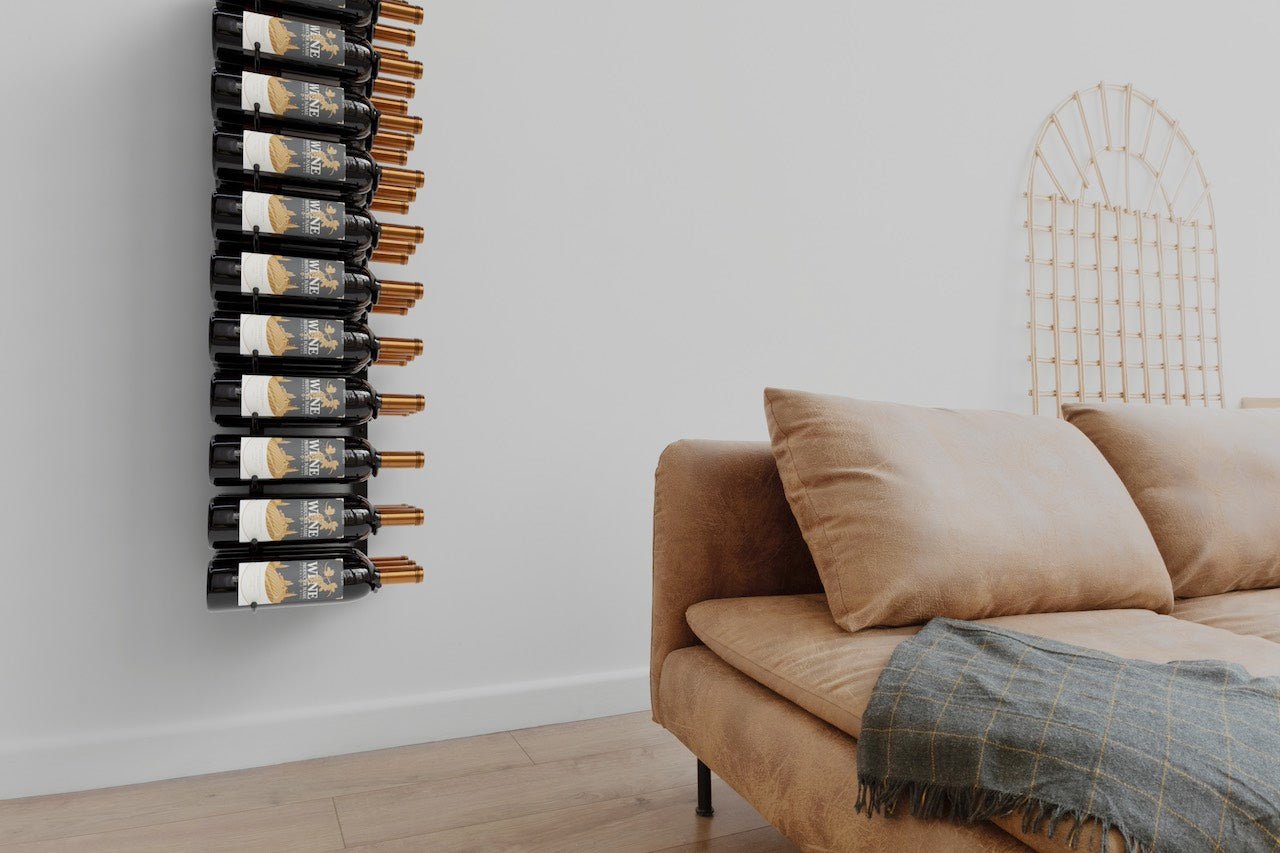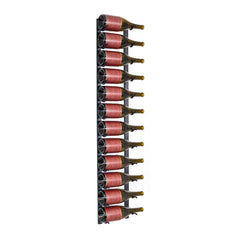There is usually that one area in our homes where we think to ourselves, “Oh yeah, I am definitely turning this space into the wine cellar of my dreams!!!”
While we might not always have many storage areas to choose from, we like to begin each Wine Cellar design by asking several key questions:
What are your wine cellar goals?
Are you cellaring or collecting wine?
Is this an aesthetic feature in your home?
How many bottles of wine would you like to store?
Do you prefer wood or metal racking?
Would you like a cooling system design?
What are the dimensions of the space?
Where is this space located in your home?
Not all house areas are created equal for storing wine, so we need to consider your wine cellar goals and the limitations of the space available.
Factors to Consider when Choosing a Location
There’s a proper wine storage technique to manage environmental factors like temperature, vibrations, or humidity. With these few wisdom in mind, your wine cellar construction can be planned accordingly, making it perfect for your home investment.
Direct Sunlight
Keeping wine out of direct sunlight is key to maintaining the freshness and quality of the wine over time. The heat from sunlight can cause the wine to develop in ways that do not complement the wine prematurely.
Temperature fluctuations can occur, causing the cork to expand and contract, exposing the wine to oxidization effects. A dark area where direct sunlight won’t reach the wine is vital for storing wine at home.
Temperature and Humidity
The space where we design your wine cellar ideally needs to be in a location that has a consistent temperature throughout the day and even the seasons. This might be tricky in most homes. However, if your goal is to cellar and collect wine for a decade or more, it is absolutely essential to consider.
Areas located in the basement are below-grade and away from direct sunlight with access to the mechanical room. Areas that may need some help maintaining appropriate temperature and humidity levels can utilize a cooling system to keep your wines fresh as long as they are stored properly.
Foot Traffic / Vibrations
The vibrations we make as we walk through our home and up-and-down the stairs play a small role in the quality of the wine over time. Vibrations can disrupt the sediment in wine bottles, manipulating how the quality of the wine ages over time.
While this may not drastically affect wines that come and go from our wine racks, it will undoubtedly affect the wines that we cellar for years or decades.
Access to power/mechanical
It’s helpful to know where power is being run in your space and the access to the mechanical room should it be necessary to install lighting or a cooling system.
Some areas in the house are harder to find access to sources of power or ceiling/floor joists, but our designs and your expectations could very well depend on it!
How much wine do you want to store?
Do you want to store 100 bottles? 500 bottles? Even more?
The wine racks we use in our designs allow us to reach large bottle capacities for our clients who have a vast wine collection.
While we can stash wine in every nook and cranny in your home, we need to consider other factors such as temperature, humidity, accessibility to the rest of the home, the mechanical room, and the electrical panel if required.
Most Popular Locations to Build a Wine Cellar
Let's take a look at these ideal locations to build a wine cellar, plus their pros and cons.
Wine Room
A full room prepped and ready to be renovated is ideal for our wine collectors. Designing an entire room for storing wine gives us a mountain of options for everything from the storage to how you enjoy your wine.
Pros: Very Flexible, Can Store large amounts of Wine, Temperature and Humidity varied solutions, design can expand to the enjoyment of wine along with the storing of wine, store wine for decades.
Cons: Greater Investment, Greater Capacity needed for Cooling entire room
Closet/Alcove/Hutch
Turning an unused closet, alcove, or hutch can be a great way to add a sharp wine storage feature to your home. The space allows for 100+ bottles to be stored and enclosed to provide an insulated and controlled environment for wine.
More often than not, a glass front/door will be installed. Just ensure that the proper double-pane glass is used and that a barrier separates any in-floor heating.
Pros: Beautiful accent to your home, turns unused space into something special
Cons: Can be exposed to direct sunlight/vibrations/temperature fluctuations, not ideal for long-term storage unless in a dark and secluded area
Wall
A wine wall can be a powerful display in your home that will impress friends and family. Depending on the wall, you can display 200+ bottles and maintain a revolving door of your favorite wines.
Pros: Turns a wall into a showpiece, easily access wines for cooking and entertaining
Cons: Exposed to the environment of the home, not ideal for long-term storage, no temperature or humidity control, heavy-foot traffic
Under-the-Stairs
Utilizing the space under the stairs is fast becoming our most requested wine cellar design. These locations have the ability to store wine in dark, cold, and secluded areas of our home. And depending on the location of the stairs can make for a great spot to store and collect wine.
Pros: Can create an eye-catching design in a small space, turns unused space into a feature in your home, can be naturally temperature and humidity controlled in the basement
Cons: Vibrations from foot traffic on stairs, extra barrier required for proper insulation, access to mechanical very challenging
Accent
Sometimes, it just takes a well-placed rack hung on the wall to suit your wine storage needs. For our DIYers who just want to accent their kitchen or dining room, simply having a space on the wall for your favorite wines is perfect!
Pros: Easy to install, easy way to improve the look of your home, can be anywhere in your home
Cons: Low capacity of storage, exposed to the home, not ideal for long-term storage


